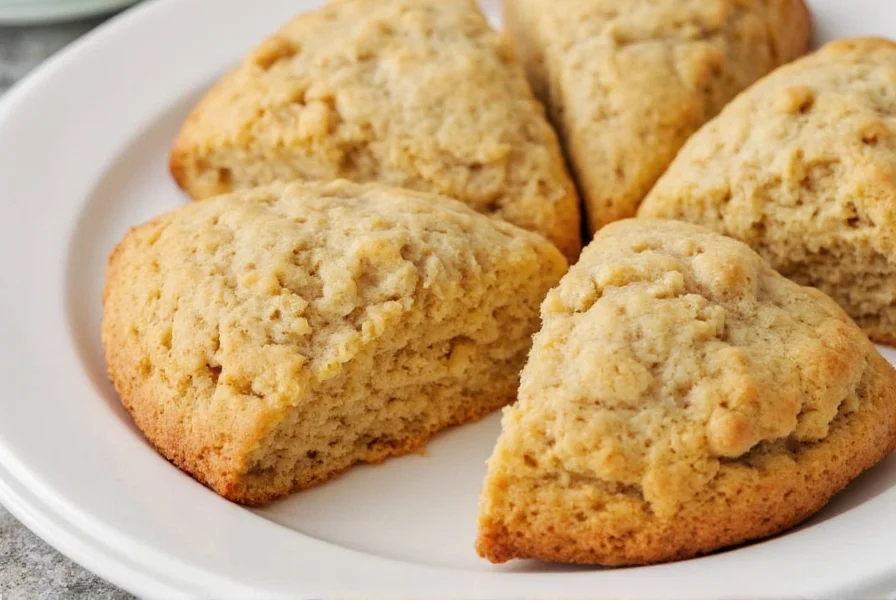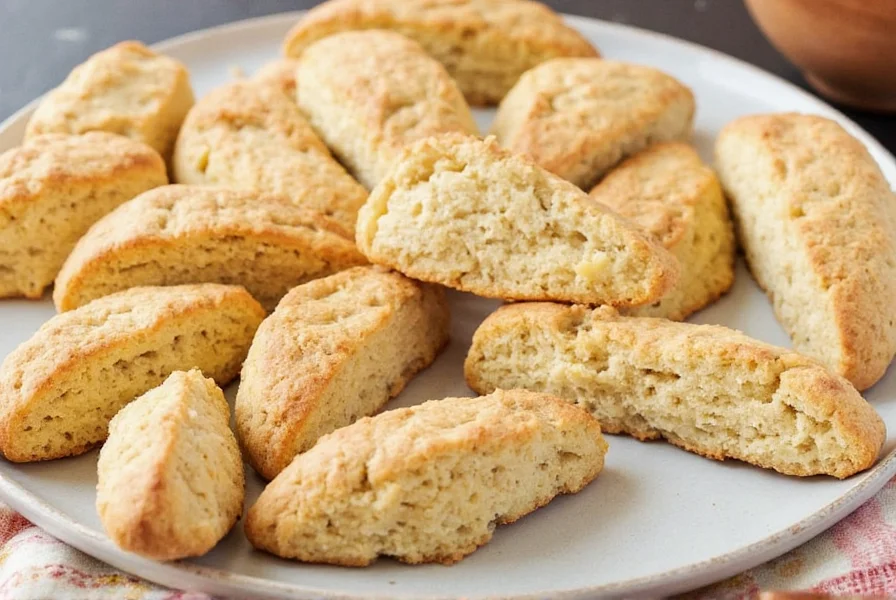Nothing compares to the comforting aroma of freshly baked ginger scones filling your kitchen. These beloved tea-time treats originated in Scotland and have become a staple of British afternoon tea service worldwide. While simple in concept, achieving the perfect crumb and rise requires understanding key baking principles that transform basic ingredients into extraordinary results.
The Essential Components of Perfect Ginger Scones
Understanding what makes ginger scones work begins with recognizing how each ingredient contributes to the final product. Unlike cakes or cookies, scones rely on precise ingredient ratios and handling techniques to achieve their distinctive texture.
| Ingredient | Quantity | Key Function |
|---|---|---|
| All-purpose flour | 2 cups (250g) | Provides structure through gluten development |
| Cold unsalted butter | ½ cup (113g) | Creates flakiness when baked; must remain cold |
| Crystallized ginger | ⅓ cup (50g), finely chopped | Delivers intense ginger flavor and chewy texture |
| Baking powder | 1½ tsp | Primary leavening agent for proper rise |
| Heavy cream | ¾ cup (180ml) | Creates tender crumb; substitute buttermilk for tang |
Why Temperature Matters in Ginger Scone Preparation
The secret to achieving that signature flaky texture lies in maintaining cold ingredients throughout preparation. Professional bakers emphasize that butter temperature directly impacts scone structure. When cold butter pieces hit the oven's heat, they create steam pockets that lift the dough layers apart. This process, called laminating, creates the delicate flakiness that distinguishes excellent scones from dense bricks.
For best results when making ginger scones from scratch, chill your mixing bowl and cutlery beforehand. Cut butter into ¼-inch cubes and return to refrigerator until ready to use. Many home bakers don't realize that even the cream should be ice-cold—consider placing your measuring cup in the freezer for 10 minutes before use.

Step-by-Step Ginger Scone Baking Process
Follow these professional techniques to ensure your ginger scones rise properly and develop that coveted golden crust:
- Prepare ingredients: Finely chop crystallized ginger (or measure ground ginger). Chill all ingredients.
- Mix dry components: Whisk flour, baking powder, salt, and sugar in a large bowl. Add ginger and toss to coat.
- Incorporate butter: Using a pastry cutter or fingers, work cold butter into dry ingredients until pea-sized crumbs form.
- Add liquid: Make a well and pour in cold cream. Gently fold mixture with a spatula until just combined—do not overmix.
- Shape dough: Turn onto floured surface and gently pat into 1-inch thick circle. Avoid excessive handling.
- Cut portions: Use a floured biscuit cutter to cut straight down without twisting (twisting seals edges and prevents rise).
- Bake: Place on parchment-lined baking sheet, brush tops with cream, and bake at 400°F (200°C) for 15-18 minutes until golden.
Troubleshooting Common Ginger Scone Problems
Even experienced bakers encounter issues with scone texture. Understanding these common problems helps perfect your technique:
- Flat scones: Typically caused by overmixing, warm ingredients, or expired baking powder. Always use fresh leavening agents and handle dough minimally.
- Dry, crumbly texture: Usually indicates too much flour or insufficient liquid. Measure flour properly using the spoon-and-level method.
- Uneven rise: Cutting scones with a twisted motion seals the edges. Press the cutter straight down without twisting for maximum lift.
- Burnt bottoms: Dark baking sheets conduct heat too aggressively. Use light-colored aluminum sheets or double your baking pans.
Delicious Variations for Ginger Scone Enthusiasts
Once you've mastered the traditional British ginger scones recipe, experiment with these popular adaptations:
- Lemon-ginger combination: Add 1 tablespoon finely grated lemon zest to the dry ingredients for a bright citrus contrast.
- Gluten-free ginger scones: Substitute with 2 cups (280g) gluten-free all-purpose flour blend and add ½ teaspoon xanthan gum.
- Vegan adaptation: Replace cream with full-fat coconut milk and use vegan butter alternative for dairy-free ginger scones.
- Spiced variation: Enhance warmth with ¼ teaspoon each of cinnamon and allspice alongside the ginger.
Serving and Storage Recommendations
Ginger scones taste best when served warm within hours of baking. Split open and spread with clotted cream and strawberry jam for the traditional British tea experience. For optimal freshness:
- Short-term storage: Keep in airtight container at room temperature for up to 2 days
- Reheating: Warm in 300°F (150°C) oven for 5-7 minutes to restore freshness
- Freezing: Wrap individual scones in plastic wrap and store in freezer bags for up to 3 months. Thaw at room temperature and reheat before serving.
Frequently Asked Questions
What's the difference between using crystallized ginger versus ground ginger in scones?
Crystallized ginger provides distinct pockets of intense flavor and a pleasant chewy texture, while ground ginger distributes flavor more evenly throughout the scone. For best results, many professional bakers recommend using a combination: ¼ cup crystallized ginger plus 1 teaspoon ground ginger for complex flavor dimension.
Why didn't my ginger scones rise properly?
Several factors affect scone rise: expired baking powder, overmixing the dough, warm ingredients, or twisting the cutter when portioning. Always use fresh leavening agents (test baking powder by mixing ½ teaspoon with hot water—if it bubbles vigorously, it's good), handle dough minimally, keep all ingredients cold, and cut straight down without twisting motion.
Can I make ginger scones ahead of time?
Yes, you can prepare ginger scones ahead of time. Shape the dough portions, place on baking sheet, cover with plastic wrap, and refrigerate overnight. Bake straight from the refrigerator the next morning—this actually improves flavor development and texture. Alternatively, freeze unbaked scones on a baking sheet, then transfer to freezer bags. Bake frozen scones by adding 3-5 minutes to the baking time.
What's the ideal texture for perfect ginger scones?
Perfect ginger scones should have a golden brown, slightly crisp exterior with a tender, moist interior featuring visible flaky layers. They shouldn't be dry or crumbly like shortbread, nor should they be dense like cake. When split open, they should pull apart easily with a slightly open crumb structure that readily absorbs clotted cream and jam without disintegrating.
How can I adapt a traditional ginger scone recipe for high-altitude baking?
At high altitudes (above 3,000 feet), reduce baking powder to 1 teaspoon, increase liquid by 1-2 tablespoons, and lower oven temperature to 375°F (190°C). High altitude causes faster rising and quicker moisture evaporation, so these adjustments prevent scones from over-rising then collapsing. You may also need to decrease sugar slightly (by 1-2 tablespoons) as sugar weakens gluten structure which is already compromised at elevation.











 浙公网安备
33010002000092号
浙公网安备
33010002000092号 浙B2-20120091-4
浙B2-20120091-4